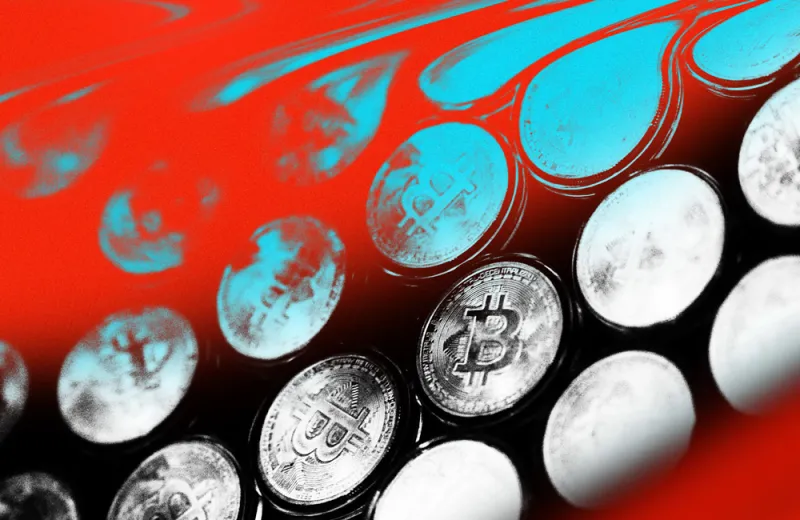When cryptocurrency prices plunged 50 percent in May, the obituaries came out for the 419th time. Yet every time they’ve “died,” cryptocurrencies have proven their detractors wrong, with prices quickly resurrecting and going on to reach new highs. To paraphrase Mark Twain, rumors of crypto’s demise have been greatly exaggerated, and the asset class will continue to thrive.
To understand the investment case for cryptocurrencies, it is important to understand that the biggest and best-known cryptocurrency — Bitcoin — is “back to front.“ Bitcoin is first and foremost the cryptocurrency BTC, which is secured against double-spending by its blockchain network. Meaning that BTC is the main act and the Bitcoin blockchain is the supporting act. However, for most other cryptocurrencies, the opposite is true. The blockchain is the main act and the cryptocurrency is the supporting act.
Ethereum is first and foremost a blockchain network, which is secured by its cryptocurrency. Meaning that Ethereum is first and foremost a decentralized intermediator of services such as smart contracts and decentralized finance (DeFi), and that Ethereum users who receive these services pay the users that validate them in its cryptocurrency, ETH, which gives ETH an economic utility.
This economic utility means that, in two important regards, the cryptocurrencies of successful blockchain networks are just like gold. Just as gold has a utility as the precious metal that makes jewelry and ornaments, the cryptocurrencies of successful blockchain networks have a utility as a means of payment for the useful intermediation services those blockchains provide.
Furthermore, because they have some utility like gold, cryptocurrencies can possess an additional investment value — as an insurance policy against the debasement of fiat money. Because just as governments and central banks cannot determine the supply of gold, neither can they determine the supply of cryptocurrencies.
This last point is important because most of the current value of gold comes not from its utility as a precious metal, but from its insurance-policy value against the debasement of fiat money. The immediate investment case for cryptocurrencies is that they are set to displace much of this value from gold.
Cryptocurrencies Will Displace Gold’s Massive Anti-Fiat Insurance Premium
Gold is scarce, but we can quantify its scarcity. Any geologist will tell you that in the earth’s crust, gold is 15 times as scarce as silver. And any chemist will tell you that the technology to extract gold and silver from its ore is essentially the same. Meaning that based on its relative scarcity, gold should trade at around 15 times the price of silver. Which is precisely where gold traded for centuries, and close to where it traded in 1970. Yet by the mid-1970s, the gold-to-silver ratio had breached 45, and by the late 1980s it had breached 75, where it broadly stands today. Why?The gold-to-silver price ratio surged because in 1971, the Bretton Woods pseudo gold standard collapsed and the world economy moved to a fiat monetary system. Moreover, it wasn’t the first time. A similar surge happened 40 years earlier, in 1931, when the original gold standard collapsed, before being reconstructed at the Bretton Woods Conference in 1944. Therefore, we can deduce that the premium in gold’s value versus its geological scarcity constitutes its insurance-policy value against the debasement of fiat money.
Some people counter that only a small proportion of gold is owned as an explicit investment, and a large proportion is owned as jewelry. Yet this has always been the case, and through most of its history, gold has traded in line with its geological scarcity. Given that the gold price surges in 1931 and 1971 coincided almost precisely with the introduction of fiat money, it is gold’s insurance-policy value against the debasement of fiat money that is setting most of its current value.
Based on gold’s above-ground market value of $13 trillion, we can deduce that around $9.5 trillion comes from its insurance-policy value. Add to that the current $2.5 trillion value of cryptocurrencies, and we can estimate that the total anti-fiat insurance market is worth $12 trillion.
We reasonably forecast that the cryptocurrency asset class can grow to take half of this market, $6 trillion, with BTC, ETH, and the others taking a third of this — $2 trillion — each. From current market values, this means that the BTC price would double to $120,000. But that’s just the sideshow, as the ETH price would quadruple to $17,000, while some embryonic blockchain tokens could do even better.
A final question is: If Bitcoin is back to front, with its underlying blockchain having less utility and versatility than Ethereum and most other cryptocurrencies, should we still own BTC? The answer is yes, for two reasons. First, in time, the Bitcoin blockchain is likely to become more versatile; and second, there will be some investors who hold out for the long-term possibility that a cryptocurrency does displace fiat money. In which case, BTC would be a prime candidate.
Dhaval Joshi is the chief strategist at BCA Research. BCA is a global independent research provider owned by Euromoney Institutional Investor.







